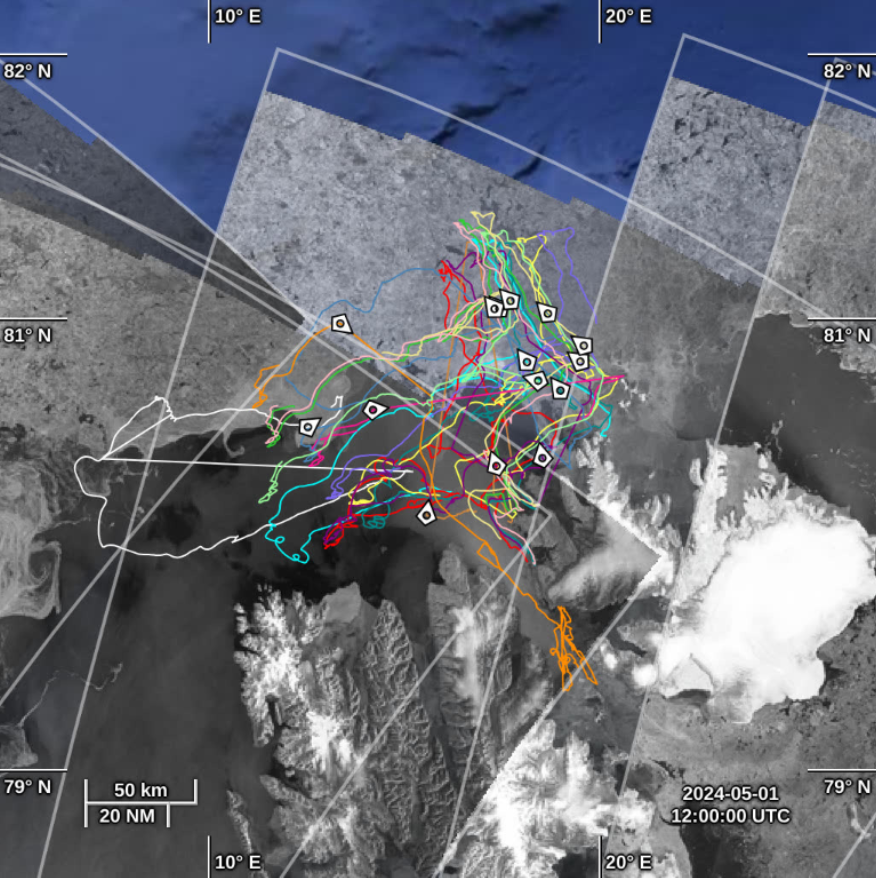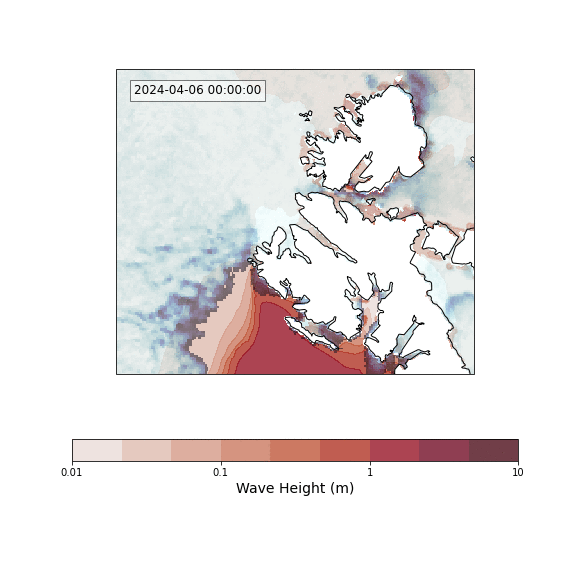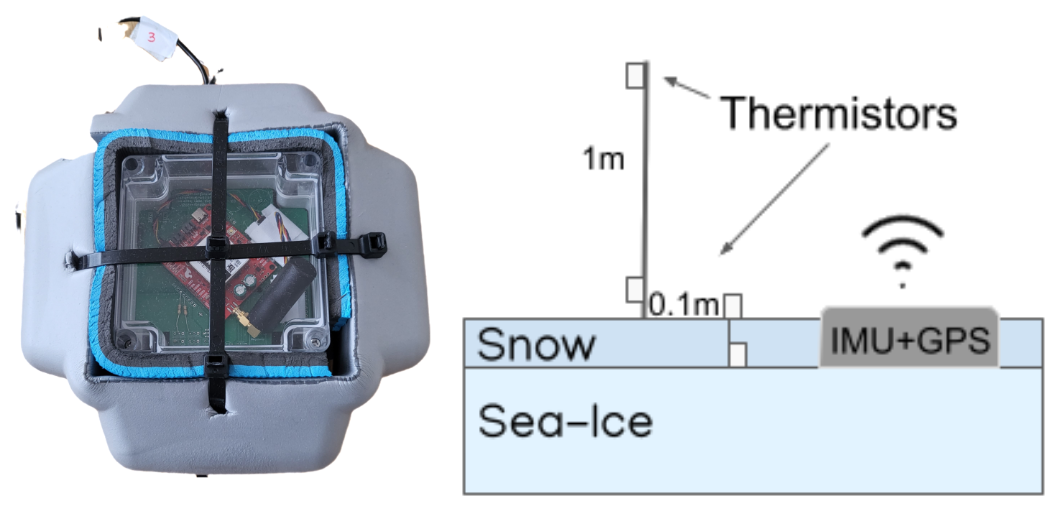A network of wave, sea-ice drift, and temperature observations
The main goal of the Svalbard Marginal Ice Zone 2024 Campaign is to observe and better understand the complex interplay between the atmosphere, waves, and sea ice in the winter Marginal Ice Zone (MIZ) and to assess the predictive skill and uncertainties of coupled Arctic forecasting systems. To allow for a representative comparison between in situ observations and gridded model data, we deployed a network of 34 buoys north of the Svalbard Archipelago in the Marginal Ice Zone with help of the Norwegian Coast Guard (KV Svalbard). The observed variables include air and surface temperature, sea-ice drift, and wave energy spectra. During the main observing period of the campaign, from April 6th to May 5th, 2024, the coupled weather, sea-ice, and wave system was very dynamic in that region. More details can be found in the Cruise Report
OpenMetBuoy + Thermistors
The OpenMetBuoy is an open-source drifter originally developed to measure waves in sea-ice. An extended version is used in the SvalMIZ 2024 experiment to measure wave, drifter-position, and temperature. Hourly significant wave height, 30-minute temperature (1m height, surface layer (+10cm/0cm), snow-ice interface), and sea-ice drift (hourly GPS)i will be transmitted via Iridium in real-time. The buoys will be deployed on sea-ice and are designed to operate later consistently in the open ocean to measure wave, sea surface temperature and ocean surface drift.
Thermistor sensitivities
 Each temperature sensor is calibrated against a PT100 sensor and we yield a final accuracy ~0.1K. Sensisitvity analysis of 3D-printed radiation shield vs. solar radiation in snow conditions is analysed by using aditional CNR-4 radiometer measurements. In addition, an on-site sensitivity analysis of sea-ice surface temperature with infrared sensors will be conducted.
Each temperature sensor is calibrated against a PT100 sensor and we yield a final accuracy ~0.1K. Sensisitvity analysis of 3D-printed radiation shield vs. solar radiation in snow conditions is analysed by using aditional CNR-4 radiometer measurements. In addition, an on-site sensitivity analysis of sea-ice surface temperature with infrared sensors will be conducted.
Data availabilty & model and satellite product intercomparisons
 The positions of the OpenMetBuoys and some of the measured parameters can be followed in real-time with the viewer of the Ocean Virtual Laboratory. The calibrated and quality controlled data will be made publicly available as soon as possible. The SvalMIZ 2024 experiment is specifically made for validation and understanding of coupled atmosphere - wave - sea-ice (forecast) models and remote sensing products. It is planed to collect and intercompare model forecasts and remote sensing products from various forecasting centers and providers in order to advance on the prediction of Marginal Ice Zone sea-ice, wave and atmosphere dyamics.
The positions of the OpenMetBuoys and some of the measured parameters can be followed in real-time with the viewer of the Ocean Virtual Laboratory. The calibrated and quality controlled data will be made publicly available as soon as possible. The SvalMIZ 2024 experiment is specifically made for validation and understanding of coupled atmosphere - wave - sea-ice (forecast) models and remote sensing products. It is planed to collect and intercompare model forecasts and remote sensing products from various forecasting centers and providers in order to advance on the prediction of Marginal Ice Zone sea-ice, wave and atmosphere dyamics.

